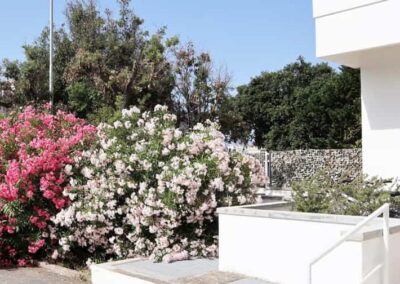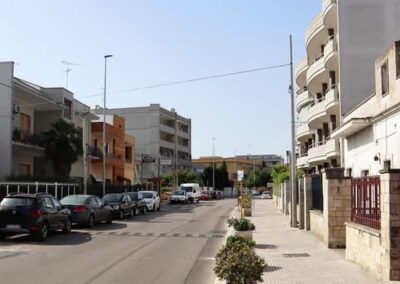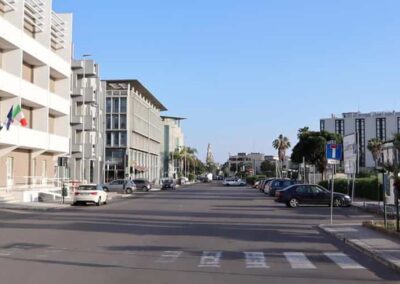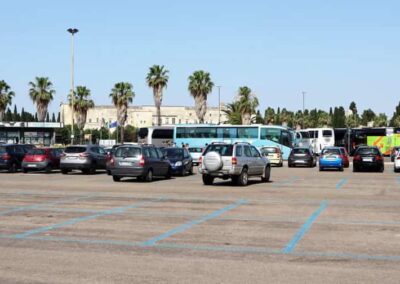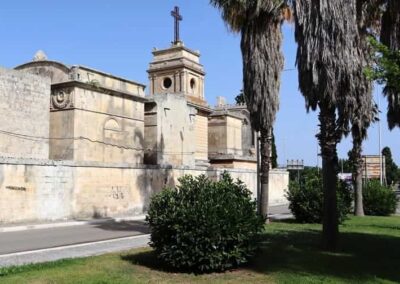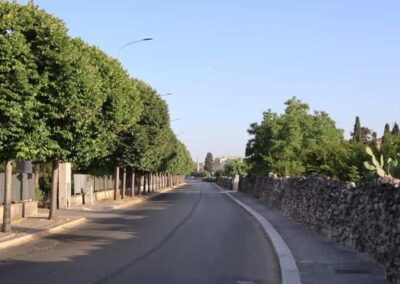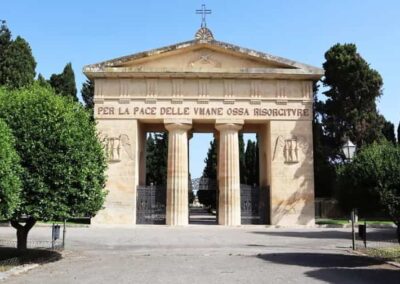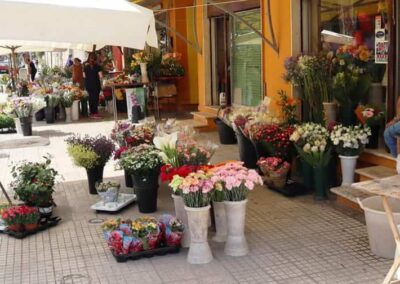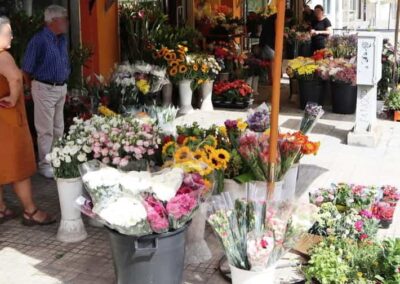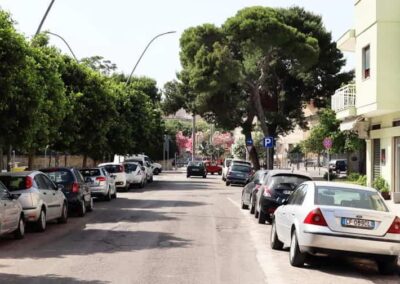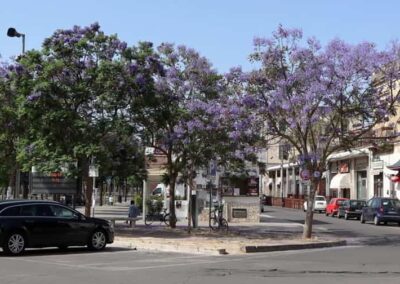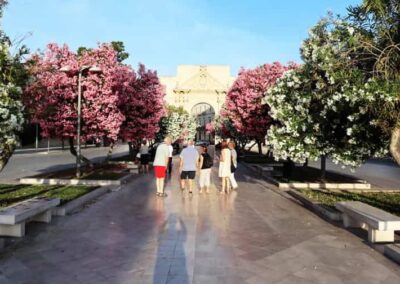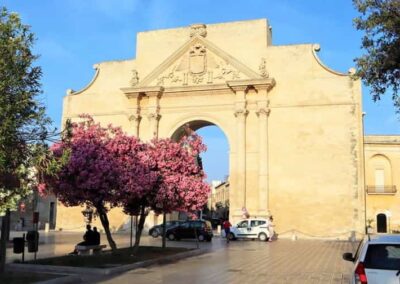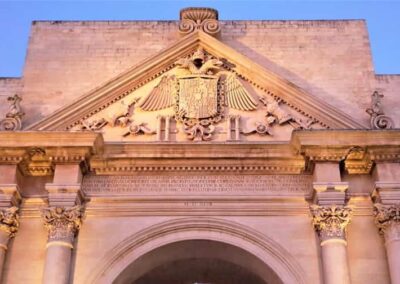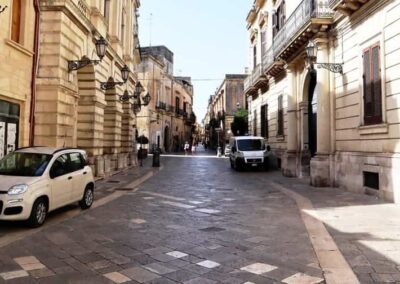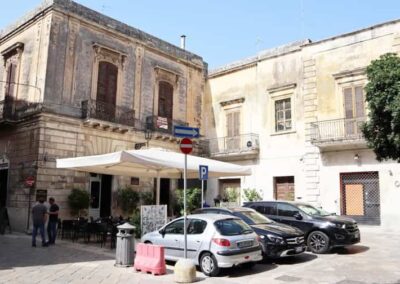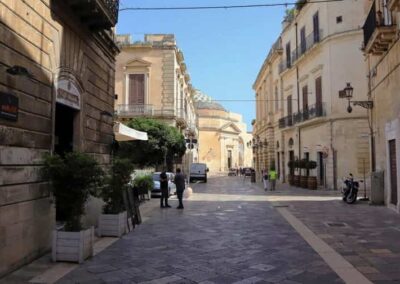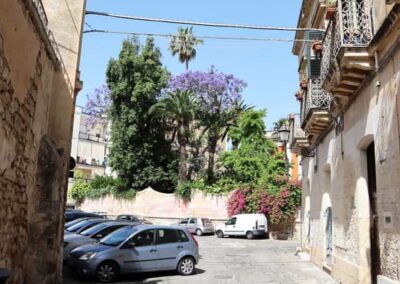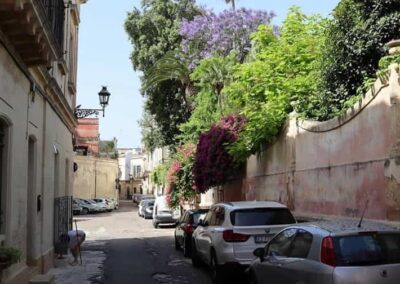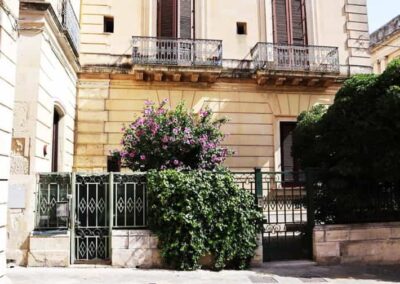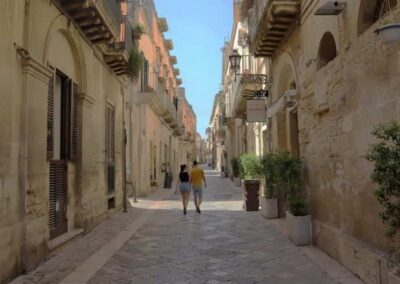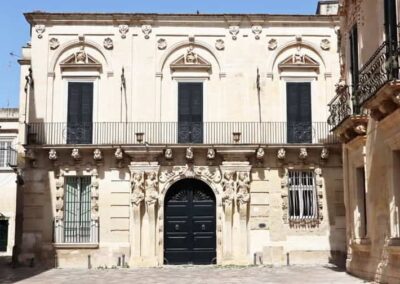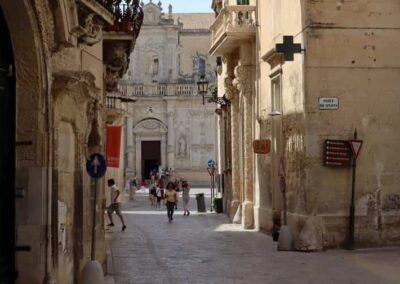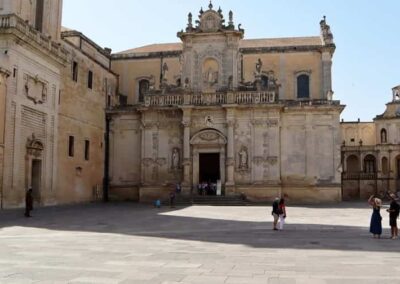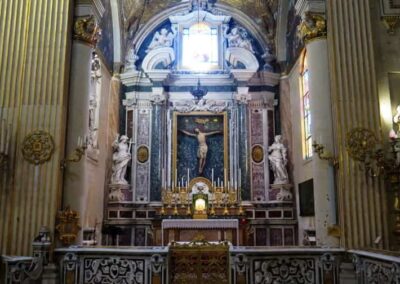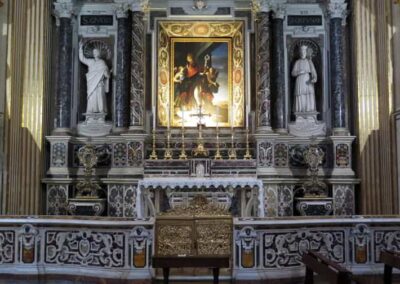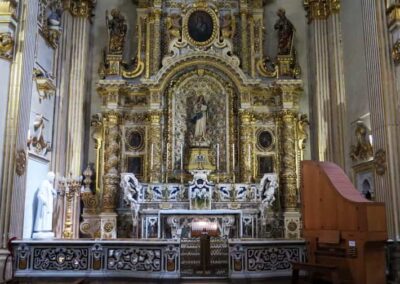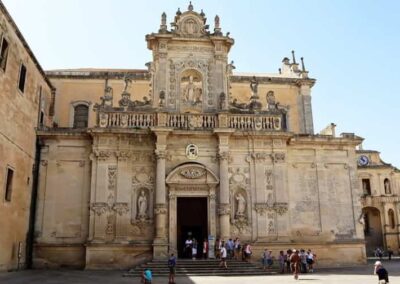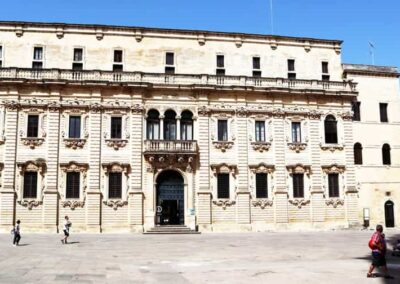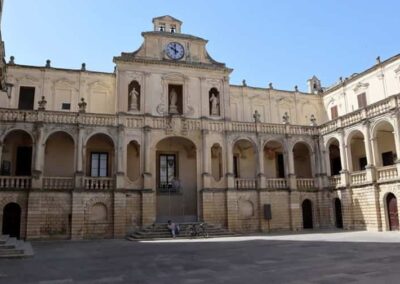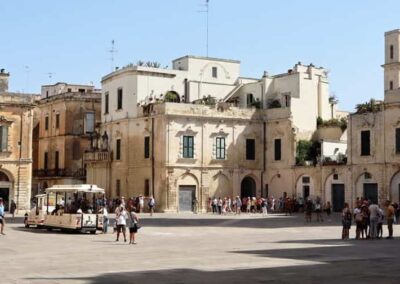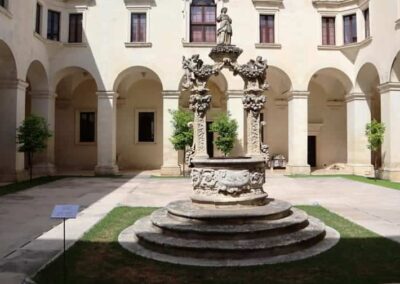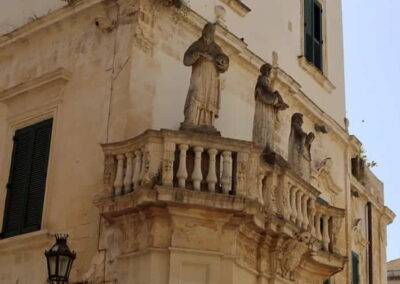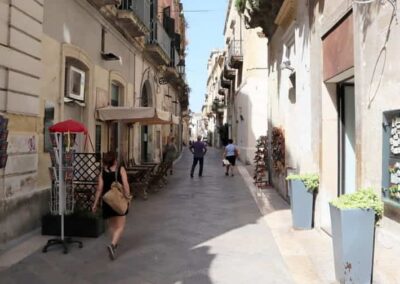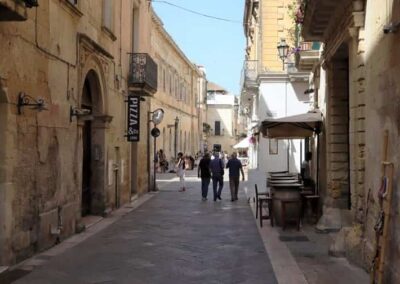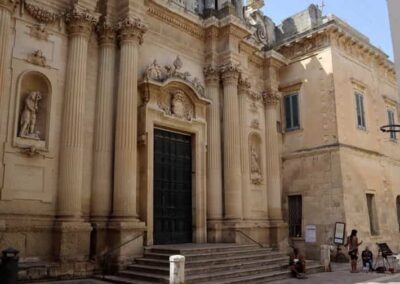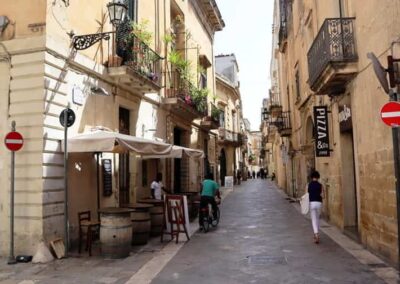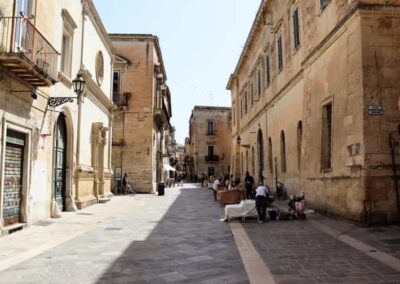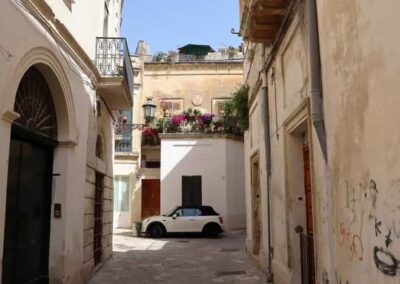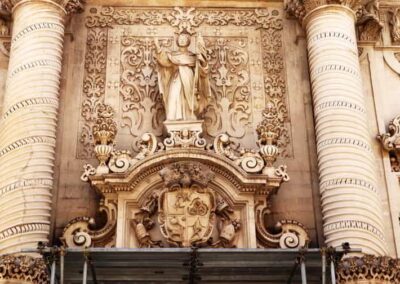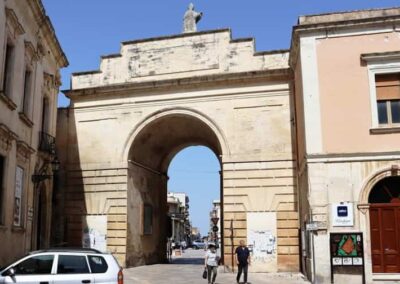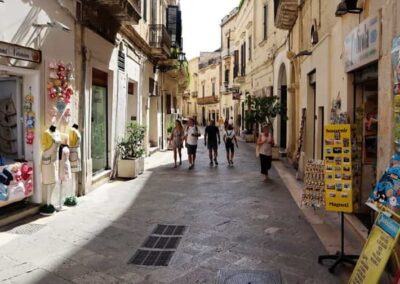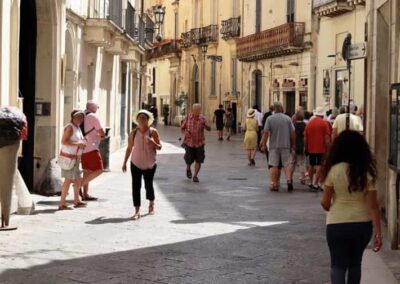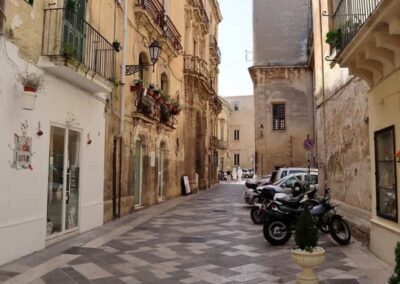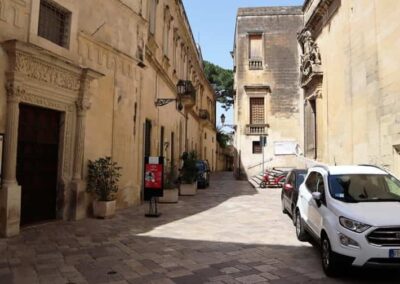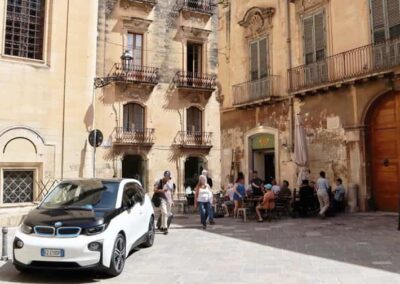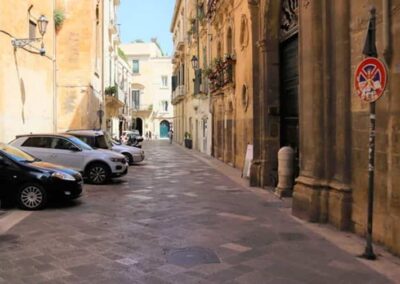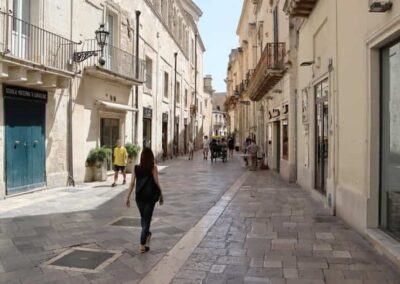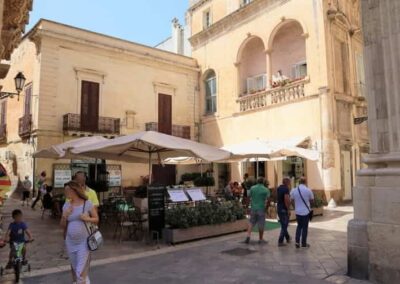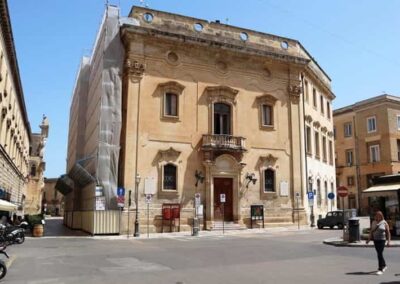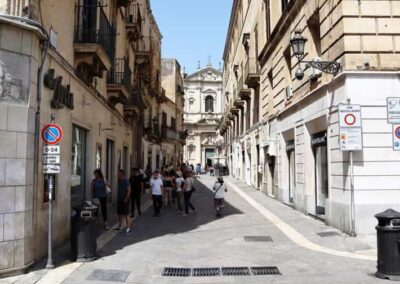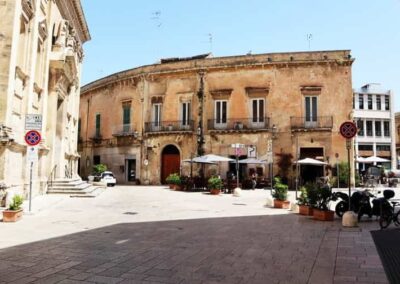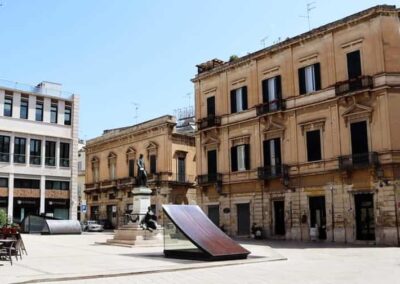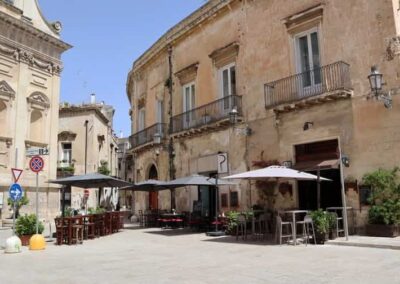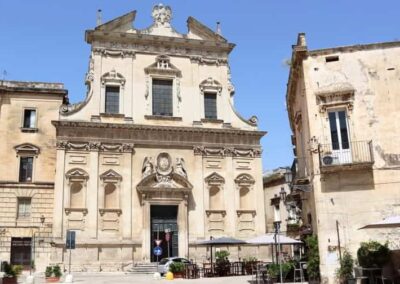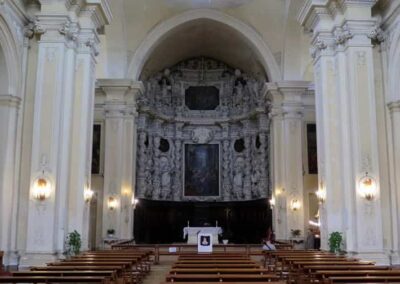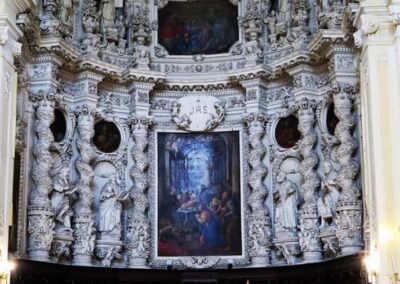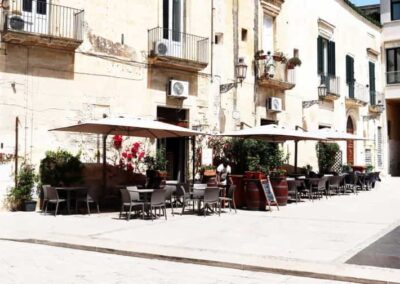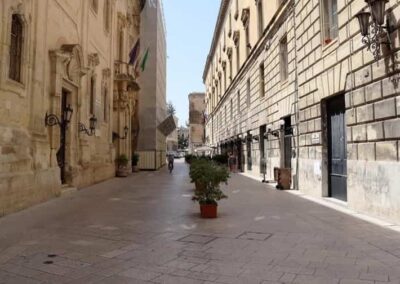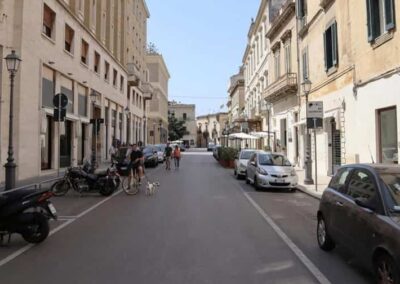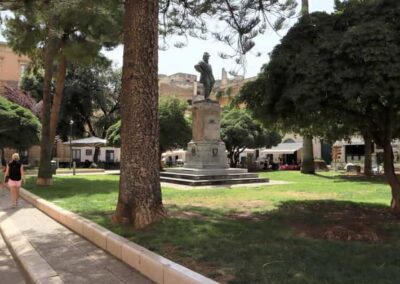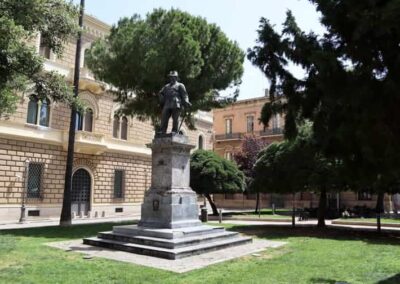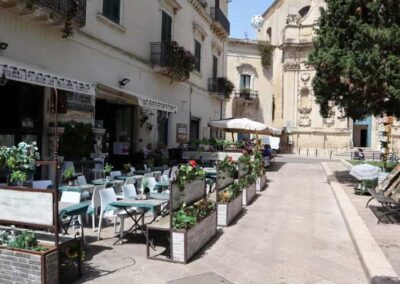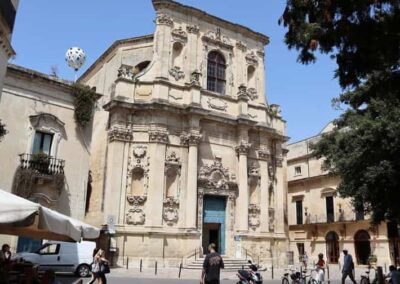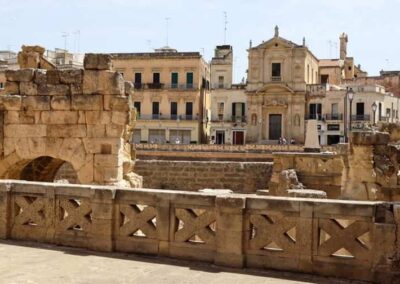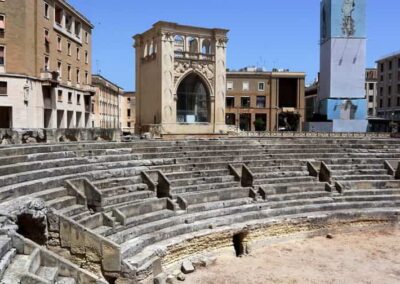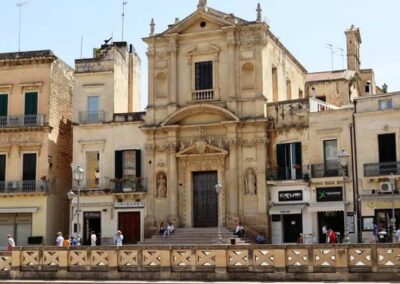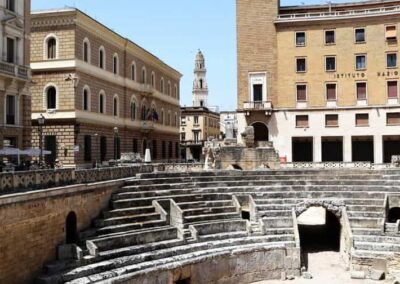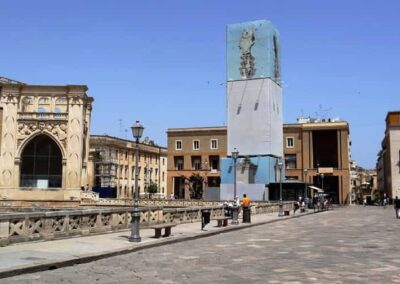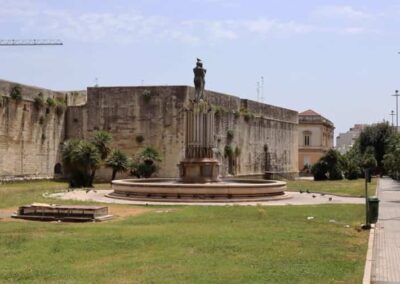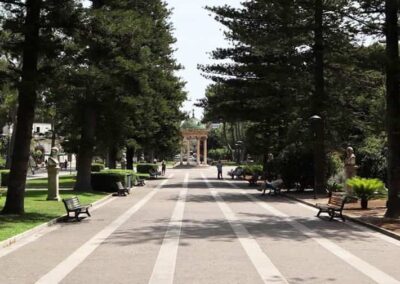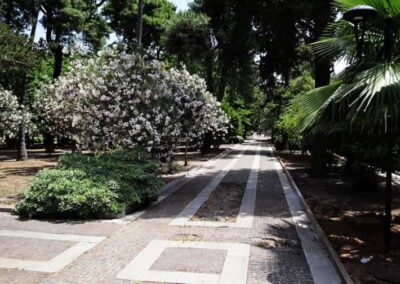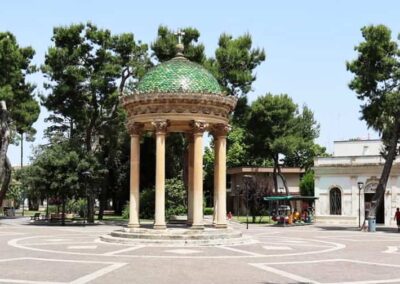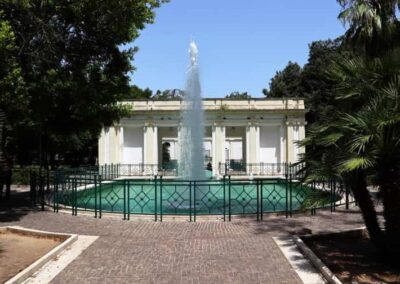HOME
THE REGIONS OF ITALY
PLACES IN ITALY
Italy in Photos
Via Francesco Rubichi, 73100 Lecce, Italy (June 2019)
Lecce
Lecce, often referred to as the “Florence of the South,” is a captivating city nestled in the Puglia region of southern Italy. Renowned for its stunning Baroque architecture, rich cultural heritage, and sun-drenched Mediterranean atmosphere, Lecce offers a perfect blend of history, art, and modern vibrancy. With a history stretching back over 2,000 years, the city has become a popular destination for those seeking an authentic Italian experience, away from the bustling tourist hubs of Rome or Venice. One of Lecce’s most striking features is its architectural grandeur. The city is famed for its Baroque-style buildings, which dominate its historic centre. Unlike other Italian cities, Lecce’s Baroque is unique, characterized by its intricate stone carvings and playful embellishments. This style, which flourished in the 17th century, is often referred to as “Lecce Baroque,” due to its distinct local flair. The soft golden hue of the buildings, made from the local limestone known as pietra leccese, gives the city an enchanting, timeless glow, especially when illuminated by the warm southern Italian sun. At the heart of Lecce’s architectural splendour is the Basilica di Santa Croce, an iconic symbol of the city. The basilica’s ornate façade, adorned with cherubs, gargoyles, and other elaborate sculptures, exemplifies the Baroque style at its most flamboyant. Nearby, Piazza del Duomo, one of Italy’s most beautiful squares, houses the Lecce Cathedral, the bishop’s residence, and a bell tower, all showcasing the city’s architectural prowess. The square’s harmonious design creates an open-air museum-like ambiance, making it a perfect spot to absorb the city’s rich historical atmosphere.
Beyond its architecture, Lecce boasts a fascinating history. Originally founded by the Messapians before becoming a significant Roman colony, the city played an important role in various historical epochs. Roman influence is still evident in Lecce’s ancient amphitheatre, located in Piazza Sant’Oronzo, the city’s main square. This well-preserved structure, which once held up to 25,000 spectators, remains a testament to Lecce’s prominence in antiquity. The Roman past blends seamlessly with the later architectural innovations, creating a layered cultural experience for visitors. Lecce’s appeal, however, extends beyond its historical monuments. The city is a vibrant hub of modern southern Italian life. Its narrow streets are lined with chic boutiques, cozy cafés, and traditional restaurants offering local delicacies. Lecce is particularly famous for its cuisine, which features the simple yet flavourful dishes of the Puglia region. Visitors can savour local specialties like orecchiette pasta, pasticciotto (a delightful cream-filled pastry), and fresh seafood from the nearby Adriatic coast. The city also plays host to various festivals and cultural events, making it a lively destination year-round. Lecce’s proximity to the stunning beaches of the Salento peninsula, with their crystal-clear waters and unspoiled beauty, makes it a perfect base for exploring the natural wonders of southern Italy. In essence, Lecce offers an alluring mix of historical depth, architectural beauty, and a vibrant, modern-day cultural scene. Whether wandering through its Baroque piazzas, exploring ancient Roman ruins, or indulging in the culinary delights of the region, Lecce promises an unforgettable experience steeped in history and southern Italian charm.
Worth a Visit

The Piazzetta Arco di Trionfo in Lecce is a charming and historically significant square that takes its name from one of the city’s most iconic monuments, the Porta Napoli, often referred to as the Arco di Trionfo. Located at the northern edge of Lecce’s historic centre, this space has long served as a symbolic gateway into the city, linking the baroque splendor of Lecce’s streets with the wider Salento region. Today, the piazzetta combines historical memory with the lively atmosphere of a cultural and social hub, making it a favourite stop for both visitors and locals. The Arco di Trionfo itself was erected in 1548 in honor of Emperor Charles V, who played a decisive role in strengthening Lecce’s defences during the sixteenth century.
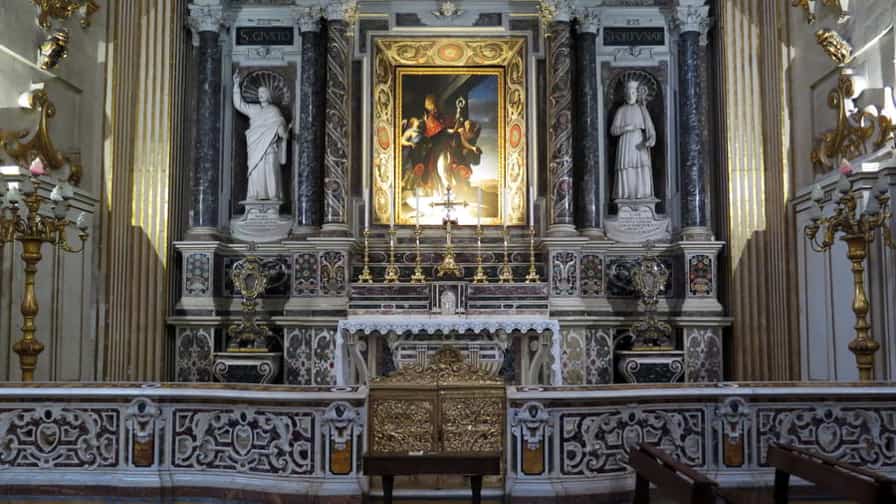
The Cattedrale di Santa Maria Assunta, more commonly known as the Cathedral of Lecce, is one of the city’s most majestic landmarks and a masterpiece of southern Italian Baroque. Situated in the Piazza del Duomo, it stands as the spiritual and architectural heart of Lecce, embodying centuries of history, devotion, and artistry. The cathedral is not only a place of worship but also a symbol of the city’s identity, where faith and artistic genius come together in perfect harmony. The original cathedral was built in 1144 under Bishop Formoso, reflecting the Romanesque style typical of the period. Over the centuries, it underwent several modifications, but the most decisive transformation came in the 17th century, when architect Giuseppe Zimbalo, one of the leading figures of the Lecce Baroque, was commissioned to redesign it. Between 1659 and 1670, Zimbalo created the cathedral as we see it today, a dazzling example of exuberant yet harmonious decoration, which has made it one of the most celebrated works of Baroque art in the Salento region.

The Museo Diocesano d’Arte Sacra in Lecce is a cultural treasure that brings together the city’s deep religious heritage and its extraordinary artistic tradition. Located within the episcopal complex of the Piazza del Duomo, the museum is housed in part of the historic Episcopal Palace, just steps away from the magnificent Cathedral of Santa Maria Assunta. This privileged position reflects the museum’s close relationship with the spiritual and civic life of Lecce, offering visitors a unique opportunity to explore centuries of sacred art in an evocative setting. The museum was established to preserve, protect, and showcase the wealth of artworks that have accumulated in the diocese over the centuries.
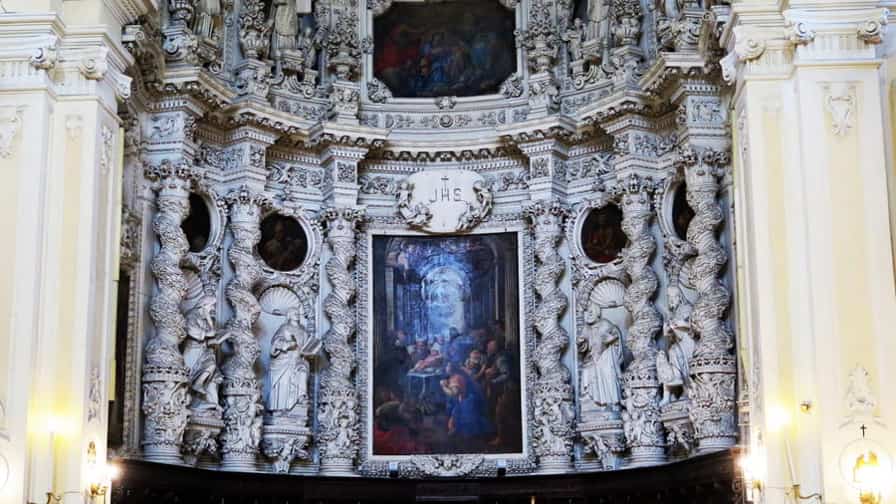
The Chiesa del Gesù, also known as the Church of Jesus or the Gesuiti Church, is one of the most remarkable examples of Baroque architecture in Lecce. Situated in the heart of the historic centre, near the bustling Piazza Sant’Oronzo, this church embodies the grandeur and spirituality that define Lecce’s artistic identity. Built in the late 16th century and completed in the early 17th century, it stands as a testimony to the influence of the Jesuit order in the city and their role in promoting art, education, and religious life. The construction of the church began in 1575, designed by the architect Giovanni De Rosis with support from the Jesuits, who had recently arrived in Lecce.
Photo Gallery of Walk 1 – Via Adriatica to Piazzetta Bonifacio IX
Approximately 1.97 km – 1.22 miles
The walk starts in Via Ferrando Nicolò – Via Adriatica – Piazza Carmelo Bene – Via V. Carluccio – Cimitero Storico Lecce, Via Cimitero – Viale S. Nicola – Via F. Calasso – Piazzetta Arco di Trionfo – Porta Napoli, Piazzetta Arco di Trionfo – Via Giuseppe Palmieri – Vico Sferracavalli – Via Luigi Scarambone – Piazzetta Bonifacio IX
Photo Gallery of Walk 2 – Via Giuseppe Palmieri to Via Arcivescovo Petronelli
Approximately 1.43 km – 0.89 miles
The walk starts in Via Giuseppe Palmieri – Piazzeta Ignazio Falconieri – Via Giuseppe Palmieri – Piazza del Duomo – Cattedrale di Santa Maria Assunta, Piazza del Duomo – Piazza del Duomo – Museo Diocesano d’Arte Sacra, Piazza del Duomo – Via Giuseppe Libertini – Porta Rudiae – Via Giuseppe Libertini – Via Vittorio Emanuele II – Via Arcivescovo Petronelli – Via Guglielmo Paladini – Vicolo Sotteranei – Via Guglielmo Paladini – Via Arcivescovo Petronelli
Photo Gallery of Walk 3 – Via Vittorio Emanuele II to Giardini Pubblici – Villa Comunale, Via XXV Luglio
Approximately 1.80 km – 1.12 miles
The walk starts in Via Vittorio Emanuele II – Via Augusto Imperatore – Via Francesco Rubichi – Piazzetta Castromediano – Chiesa del Gesù, Piazzetta Castromediano – Via Francesco Rubichi – Via Augusto Imperatore – Via degli Ammirati – Via Ludovico Maremonti – Via Augusto Imperatore – Vicolo Storto Carità Vecchia – Via Giuseppe Verdi – Via Ernesto Alvino – Via Vito Fazzi – Via G. Marconi – Fontana Dell’Armonia, Via G. Marcon – Via G. Marconi – Via XXV Luglio – Giardini Pubblici – Villa Comunale, Via XXV Luglio
COPYRIGHT © 2018-2025 ITALY IN PHOTOS - ALL RIGHTS RESERVED
